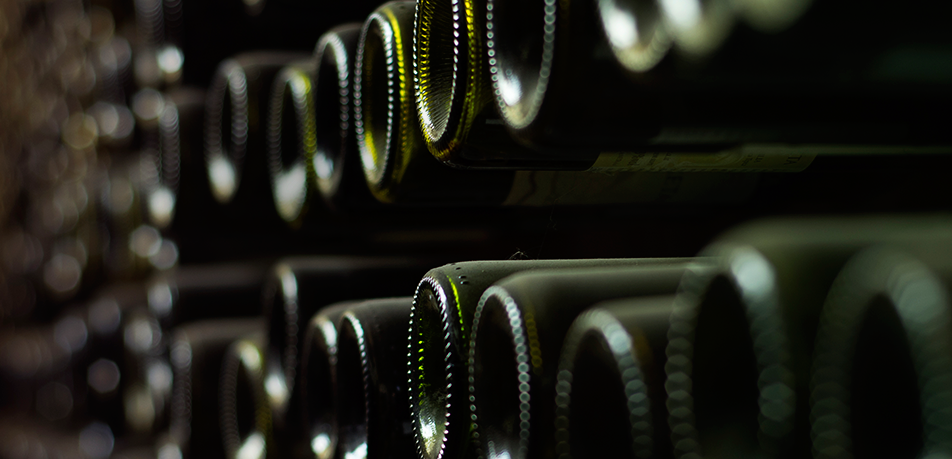WINE & GLASS

The use of glass to store, serve and consume wine has had a decisive impact on health standards, hygiene and transport.
Although it might come as a surprise, ancient civilizations already used glass, although this demanded a certain social status. However, it wasn't until the 18th century that glass bottles became an affordable part of everyday life in a world that saw how the continuous advances and changes in the wine sector demanded a solution that was accessible to all levels of society.
Below we provide a brief overview of the main historical events and particularities that turned glass into wine's primary ally as it made its way into our glasses and lives, while also posing an environmental challenge.
In fact, the challenge wineries face is two-fold: reducing their carbon footprint and maintaining the quality of their wines.
- Glass was known throughout the Middle East as early as 4000 B.C., although its use was mostly ornamental. During the 13th century B.C., however, Greece turned to glass as a suitable container for wine storage due to its biologically inactive properties.
- An invention that endured over time. The Syrians¹, when they were part of the Roman Empire, were supposedly the first to blow glass, but this technique declined along with the empire. The Middle Ages plunged Europe into a period of darkness. Given the fragility of glass, it made sense that people in ancient times opted for materials like clay amphorae or animal-skin receptacles.
It spread from Venice across Veneto and from there, like wildfire, to Tuscany.
- Due to its close trading ties with the East, Venice saw the resurgence of glass craftsmanship. Il Cristallo or glass first appeared in Italian crafts in 1463, but said invention did not save Venice from later losing its status as the glass empire to the Czech Republic and Germany, which became the epicenter of skillfully handcrafted high-quality glass production.
By the early 1800s, the container was cheaper than the wine it contained, and the production of bottled wine became commonplace.
- The wine sector underwent enormous changes during the 17th and 18th century that shook its commercial and production structures to their very foundations. The introduction of quality wines demanded guarantees from the glass industry that they would age appropriately. The first great wines to mature in the reductive environment of a glass bottle became highly prized enological gems a few years later.
Nowadays, at the beginning of the 21st century, environmental concerns are at an all-time high. It is time, not only for wineries, but the entire sector, from the vineyard to final transport, to push for sustainability in wine production as a driving force for much-needed change throughout the industry. This means implementing in-house initiatives that include actions such as decreasing bottle weight to reduce per-bottle carbon emissions, as well as recognizing the efforts of the parties involved and committed to this process.
The threat is real and serious so let's join forces and make this world something we can all be proud of. A home where future generations have the chance of being one with the Earth, inheriting cultural practices and a way of understanding viticulture that strives for balance and bases its growth on quality, the expression of terroir and minimal environmental impact.
__________________________________
( ¹According to the theory writer Eduard Puig Vayreda puts forth in his book El Jardí de Dionís [The Garden of Dionysus])
